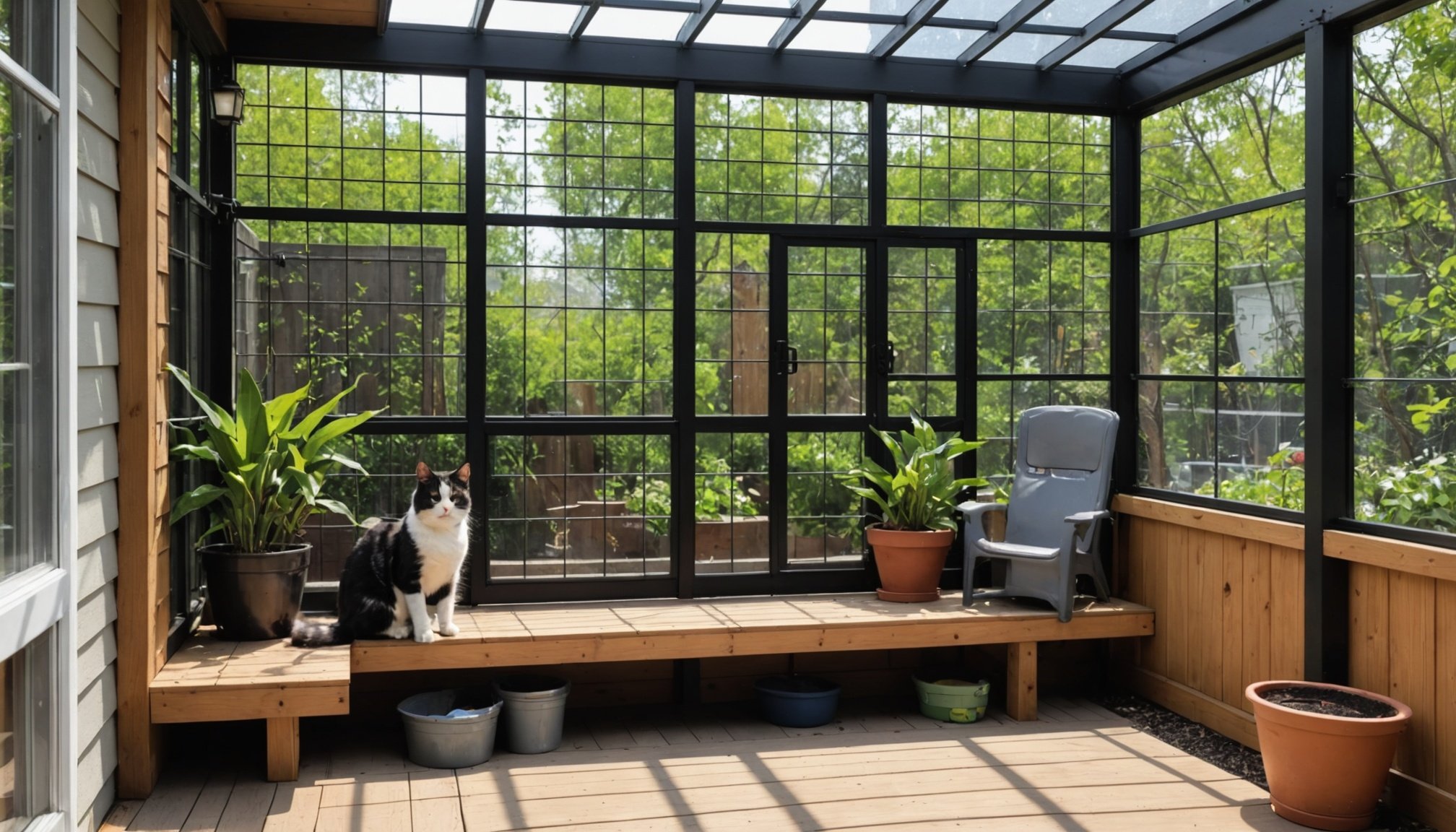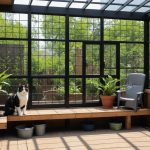Understanding Mobility Challenges in Cats
Mobility challenges in cats can arise from various causes, such as arthritis, injuries, or congenital disabilities. Recognising these challenges is crucial for providing safe and enriching environments for our feline friends. When it comes to inclusive design, addressing feline disabilities enables cats to move comfortably within their surroundings, leading to a more fulfilling and enjoyable life.
Creating environments with inclusive design in mind not only benefits cats but also enhances their owners’ peace of mind. For instance, specially designed spaces can accommodate cats with limited mobility, making everyday activities easier for them. This consideration can include additional ramps, even surfaces, and easily navigable floor plans that respect their physical capabilities.
Also to read : Essential tips to ensure your cat stays happy and active throughout a long vet visit
The importance of incorporating mobility challenges in design cannot be overstated. Thoughtful design helps mitigate stress on joints and reduces the risk of injury. Inclusive design for cats fosters independence and promotes better health, allowing for more playful and stress-free interactions.
By focusing on creating an environment that considers feline disabilities, cat owners can ensure their pets lead happier, more active lives. The benefits of embracing such design principles extend beyond practicality, offering a better quality of life to our cherished companions.
Also read : Essential tips for a smooth and safe cat-baby introduction in your home
Essential Features of Catios for Mobility-Challenged Cats
Designing a catio for mobility-challenged cats requires thoughtful planning to enhance both accessibility and safety. Key features include accessible design elements tailored to the specific needs of cats with limited mobility. Implementing ramps with gentle inclines ensures easy navigation, allowing cats to enjoy their outdoor space without strain. Moreover, non-slip surfaces are crucial for avoiding accidents and provide a stable ground for those with weaker limbs.
Safety measures are paramount in creating a catio that accommodates all cats, especially those with mobility challenges. Secure enclosures protect against potential hazards like falls and prevent escapes, giving peace of mind to pet owners. Adequate fencing and covered areas can shield cats from adverse weather conditions, further ensuring their comfort.
In terms of materials, cat-friendly options such as soft synthetic grass and cushioned mats integrate inclusivity by offering comfort and gentle footing—ideal for sensitive paws. These materials help in mitigating physical stress and reducing discomfort during movement.
By focusing on accessible design and safety, you can craft a catio that truly supports the wellbeing of mobility-challenged cats. Tailoring these outdoor spaces ensures they remain engaging, providing equal enjoyment and fulfilment for all feline companions.
Design Tips for Creating an Inclusive Catio
Creating a catio that is both inclusive and engaging requires careful planning. By considering design tips, one can craft outdoor spaces that offer plenty of enrichment opportunities for mobility-challenged cats.
Layout and Space Planning
Begin with a spacious layout to allow easy movement. Ensuring there is ample room is essential for facilitating smooth navigation. Integrating ramps and gentle inclines further aids in effortless exploration while catering to mobility needs. Consider designating quiet areas where your cats can rest comfortably, providing them with safe and comforting spaces.
Shelving and Perches
To optimise shelving, select heights accessible to all cats. Consider using broad surfaces to offer enhanced stability, reducing the risk of falls or slips. Retractable perches can be a great addition, providing flexibility and ease of access for cats with limited mobility.
Environmental Enrichment
Enrichment is key: incorporate sensory experiences that cater to mobility requirements. Introduce stimulating elements that do not put physical strain on the cats. Interactive toys designed specifically for mobility-challenged cats can create stimulating environments and encourage playful interactions.
By implementing these design tips, you can create a catio that brings joy and enrichment to all cats, regardless of their mobility challenges.
Real-Life Adaptations and Success Stories
Discover inspiring case studies demonstrating how cat owners have successfully adapted their homes to support mobility-challenged cats. One notable example involves a family who transformed their traditional catio into a successful catio design tailored for their feline’s specific needs. By incorporating gradual ramps and secure, non-slip surfaces, they ensured the cat could explore its outdoor space safely.
Another heartwarming story features an owner who consulted experts in inclusive design to modify their home’s layout. This collaboration led to effective adaptations like optimised shelving and wide, stable platforms that accommodated their cat’s mobility challenges. By focusing on these practical modifications, they significantly enhanced their pet’s quality of life.
Experts emphasize the importance of observing your cat’s behaviour and needs to inform design changes. Jane Doe, a feline disabilities specialist, advises, “Simple adjustments can make a world of difference for your pet’s independence and happiness.”
These real-life examples provide valuable insights and inspiration for any cat owner seeking to create a supportive environment. By learning from others’ experiences, you can effectively address your pet’s unique challenges and enhance their overall well-being through thoughtful design modifications.
Resources and Expert Recommendations
When addressing mobility challenges in cats, turning to expert advice is invaluable. Consulting veterinarians ensures recommendations are tailored to your pet’s specific needs, capturing nuances unique to each feline. Professionals can assess conditions such as arthritis or other feline disabilities, providing pivotal insights.
Connecting with pet-friendly contractors or designers versed in inclusive design aids in crafting environments that enhance accessibility. These experts specialise in creating setups that accommodate the varied needs of mobility-challenged cats, integrating features seamlessly into your home’s layout.
Connecting with Professionals
Finding reputable resources is paramount. Consider joining online communities that focus on cat well-being. These platforms often share experiences and ideas on how best to navigate design challenges. Members can offer real-world solutions tested by others managing similar issues.
Downloadable Guides
For those inclined towards DIY projects, having access to step-by-step guides can be a game-changer. Look for downloadable design templates and checklists that provide clear blueprints for creating enriching outdoor spaces or adapting interiors. These resources can be invaluable in ensuring all aspects of your design cater to your cat’s mobility needs effectively.
While the journey to accommodating your cat’s specific needs may seem daunting, ample expert resources can help guide and reassure every step of the way.











